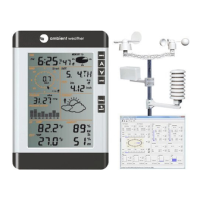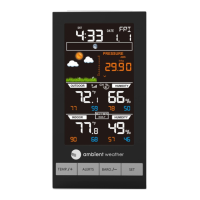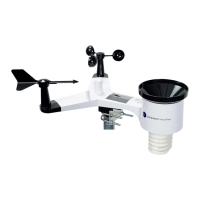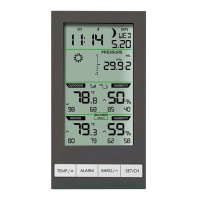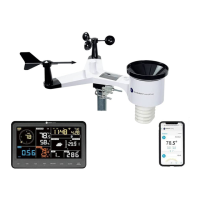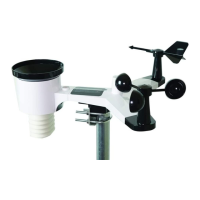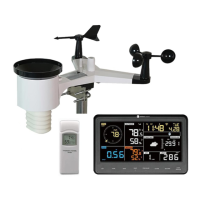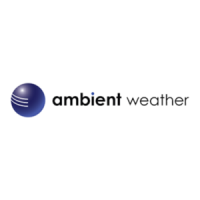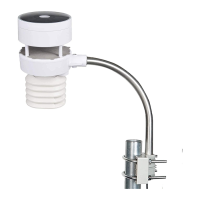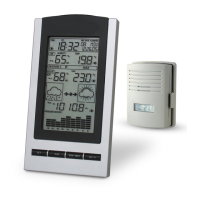Version 2.12 ©Copyright 2020, Ambient LLC. All Rights Reserved. Page 54
psychrometer.
(3) The display tablet displays two different pressures: absolute (measured) and relative
(corrected to sea-level).
To compare pressure conditions from one location to another, meteorologists correct pressure
to sea-level conditions. Because the air pressure decreases as you rise in altitude, the sea-level
corrected pressure (the pressure your location would be at if located at sea-level) is generally
higher than your measured pressure.
Thus, your absolute pressure may read 28.62 inHg (969 mb) at an altitude of 1000 feet (305
m), but the relative pressure is 30.00 inHg (1016 mb).
The standard sea-level pressure is 29.92 in Hg (1013 mb). This is the average sea-level
pressure around the world. Relative pressure measurements greater than 29.92 inHg (1013
mb) are considered high pressure and relative pressure measurements less than 29.92 inHg are
considered low pressure.
To determine the relative pressure for your location, locate an official reporting station near
you (the internet is the best source for real time barometer conditions, such as Weather.com or
Wunderground.com), and set your weather station to match the official reporting station.
(4) Only use this if you improperly installed the weather station sensor array and did not point the
direction reference to true north.
(5) The default conversion factor based on the wavelength for bright sunlight is 126.7 lux / w/m
2
.
This variable can be adjusted by photovoltaic experts based on the light wavelength of
interest, but for most weather station owners, is accurate for typical applications, such as
calculating evapotransporation and solar panel efficiency.
(6) Wind speed is the most sensitive to installation constraints. The rule of thumb for properly
installing a wind speed sensor is 4 x the distance of the tallest obstruction. For example, if
your house is 20’ tall and you mount the sensor on a 5’ pole:
Distance = 4 x (20 – 5)’ = 60’.
Many installations are not perfect and installing the weather station on a roof can be difficult.
Thus, you can calibrate for this error with a wind speed multiplier.
In addition to the installation challenges, wind cup bearings (moving parts) wear over time.
Without a calibrated source, wind speed can be difficult to measure. We recommend using a
calibrated wind meter (available from Ambient Weather) and a constant speed, high speed fan.
(7) The rain collector is calibrated at the factory based on the funnel diameter. The bucket tips
every 0.01” of rain (referred to as resolution). The accumulated rainfall can be compared to a
sight glass rain gauge with an aperture of at least 4”. The following is a link to an accurate
sight glass rain gauge:
http://www.ambientweather.com/stprraga.html
Make sure you periodically clean the rain gauge funnel.
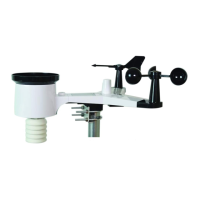
